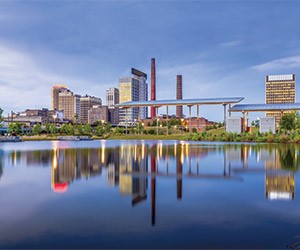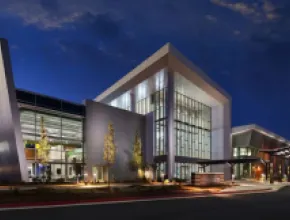Nineteen-sixty-three was a big year for the city of Birmingham, and it appears that 2013 will be as well.
Fifty years ago, the passing of the Civil Rights Act was set in motion by a series of events in the Alabama city, which now has just over 212,000 residents. Birmingham was in the national spotlight that year, as racial tension increased, violence shook the city and visible leaders including Reverend Martin Luther King Jr. spoke out against segregation.
But the city overcame the strife and has received heaps of positive attention, even being highlighted on NBC’s Today Show as an up-and-coming destination and one of the top places to visit in 2013.
Planners and travelers are drawn into Birmingham as they walk the historic streets and study its powerful history. Plus, the city offers gleaming new conference hotels, exciting dining options and a long list of group attractions.
“We’re off to a great start and this year is looking positive,” says Mike Gunn, vice president of convention sales at the Greater Birmingham CVB. “The anniversary of the Civil Rights Act is very visible in town.”
Gunn reports that in January, Birmingham already surpassed its previous record for convention-business room nights, reaching the highest point in the bureau’s history.
“A real buzz is building around Birmingham,” he says.
He attributes this success to a combination of returning economic growth, the opening of the new Westin Birmingham and national attention from the Civil Rights Act anniversary and related events.PageBreak
“You can spend a whole day visiting the Civil Rights Institute, 16th Street Baptist Church and Kelly Ingram Park, which just added a new smartphone-compatible audio tour,” Gunn says. “The tour walks you through events and really paints a picture of how they took place.”
In a southeasterly direction from Kelly Ingram Park, historical markers are being put up around the Fourth Avenue Business District to alert visitors to points of interest. During the Jim Crow era, the district was the cultural and economic center of the black community and the business tradition continues today.
Commemorative events are taking place throughout the year as part of the 50 Years Forward campaign and include special exhibits at the Birmingham Arts Museum, a Juneteenth festival commemorating the end of slavery, performances at the University of Alabama at Birmingham and a run of Harper Lee’s To Kill A Mockingbird at the Virginia Samford Theater, which also offers meeting and event space.
A popular venue for groups of all types, especially this year, is the Birmingham Civil Rights Institute (BCRI). The institute has seen a huge surge in business already this year as planners look to draw inspiration from the Birmingham Civil Rights Movement.
“People like to have meetings here because of the significance,” says Laura Anderson, archivist at the BCRI.
This year, the institute is breaking all its previous records in terms of attendance, research and media inquiries.
“Anniversaries can help us reflect and see the progress we’ve made,” Anderson says. “Everyone is coming here this year and it has been really fun.”PageBreak
The mission of the institute, as she explains it, is to serve primarily as a museum that interprets the story of the Birmingham movement and to promote worldwide civil and human rights through education. It was specifically built for this purpose, but the new building is located in a historic spot, steps away from Kelly Ingram Park and 16th Street Baptist Church.
Corporate groups, community organizations, schools and nonprofits alike can find inspiration in the universal message of ordinary people working together to accomplish extraordinary things.
“We endeavor that anyone can see themselves reflected here in a way and leave feeling inspired,” Anderson says.
A typical experience involves a tour of the permanent exhibitions, which include an introductory film and exhibits tracing Birmingham’s history, from segregation and Jim Crow through various confrontations and finally, to change. A special exhibit on the Birmingham Children’s Crusade is running through November and viscerally powerful displays include a replica of the burned-out Freedom Rider Greyhound bus that was attacked in Birmingham.
“Visitors see the conflict build,” Anderson says. The exhibition concludes with a look at human rights struggles around the world.
Facility rentals are available, including lecture rooms and classroom spaces for smaller groups, as well as the large Rotunda, available for receptions of up to 300 people.
For another view of local history, Vulcan Park & Museum overlooks Birmingham from the top of Red Mountain, and the park’s namesake statue—a 100,000-pound iron behemoth—stands 56 feet tall, a symbolic representation of the city’s spirit and strength. The statue was built in 1904, christened at the St. Louis World’s Fair in 1904, shipped back to Birmingham and finally restored in 2001, when the park began a modernization project and expanded its educational offerings and event facilities. The Roman god of fire and forge, Vulcan is a reference to the city’s history as a hotbed of iron production, which led to rapid population growth in the early 1900s.






